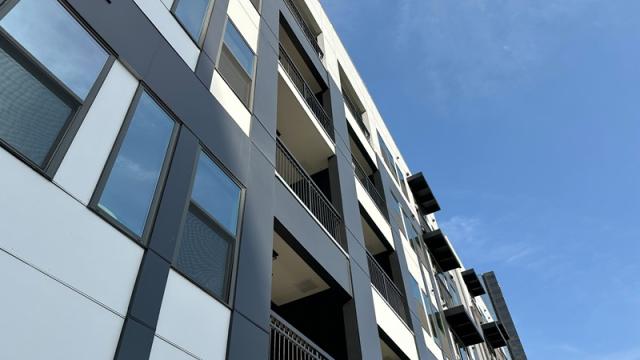webinar

CoStar Group


Apartments.com

A Challenged Multifamily Market Shows Bright Spots in Q3 2023
Has the turbulence in the economy and multifamily industry begun to calm down? In their latest webinar, CoStar’s Christine Cooper and Jay Lybik examined the signs of a market inching towards recovery, even as economic uncertainty poses a risk to these trends.
An economic upswing, but for how long?
The U.S. economy has shown “strong momentum” in the third quarter, said Cooper, CoStar’s managing director and chief U.S. economist. In addition to 3-percent annualized growth, the labor market remained strong with 336,000 jobs added in September, while services industries such as travel and entertainment continued to expand.
But not all economic news is positive. Despite substantial progress, inflation still remains a concern, and Cooper pointed to both the consumer price index and core CPI landing well above the Federal Reserve’s inflation target of 2 percent.
At the same time, wage growth and real disposable income have declined. Household spending is likely to weaken, Cooper said, thanks to a drop in consumer confidence, a rise in credit card delinquencies, and the return of student loan payments. Cooled by rising mortgage rates, the housing market is in decline, and the manufacturing sector, which is sensitive to borrowing costs, has seen 11 straight months of contraction.
The threat of a mild recession remains. Geopolitical events, a potential government shutdown, and the slowdown of the automotive sector all raise the likelihood of this possibility.
“It might start later than we expected, but our most accurate recession probability indicators are flashing danger signals,” Cooper said.
Demand for apartments slowly rising
The multifamily sector is slowly, if unevenly, heading toward recovery. Lybik, CoStar’s national director of multifamily analytics, pointed to the positive demand trendline to highlight this shift.
2023 has seen three consecutive quarters of increasing renter demand. With 70,000 units of absorption, the three-star class has help push up the overall demand numbers, an encouraging rebound from the negative numbers posted last year.
But even as absorption rises to its highest quarterly number in two years, deliveries have remained at record levels, keeping supply well above demand. This imbalance drove the national vacancy rate up to 7.0 percent by the end of September and is most pronounced for four- and five-star apartments.
Record-high deliveries take a toll on rent growth
With almost 1 million units under construction as of September, rent growth for four- and five-star units has taken a dive. These high-end apartments comprise 70 percent of the units currently under construction, Lybik said, and the vacancy rate for this class has reached 9.6 percent.
The oversupply issue is especially dire in the formerly hot markets of the Sun Belt, with Austin and Atlanta seeing the greatest declines in rent growth. Supply in Sun Belt markets has grown 64 percent since 2019, he said, compared to only 8 percent in the rest of the country.
On the other hand, the minimal new construction in the Midwest has propelled this region to the #1 position for rent growth, with the Northeast close on its heels. The top five markets for rent growth in the third quarter were Northern New Jersey, Cincinnati, Chicago, Indianapolis, and Boston.
2024 offers a positive outlook
With suboptimal market conditions, 2023 has been a challenging year for the multifamily industry, Lybik said. But he pointed to several bright spots in the forecast, such as the growth in mid-priced demand and asking rents.
“Hopefully, the rebound in middle-market demand will continue to grow for the remainder of this year and into 2024,” he said. “If so, it could stabilize the multifamily sector and set the stage for a recovery.”
Looking ahead, CoStar projects positive rent growth for all major markets in 2024, with over half outpacing their pre-pandemic five-year averages.
Recovery will be slower for oversaturated Sun Belt markets, and the nationwide prospect of recession still looms as a potential risk for multifamily.







